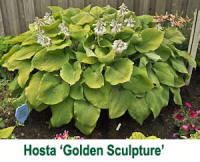There is a
certain amount of misunderstanding when it comes to the role of the
Registrar. His or her responsibilities are pretty narrowly defined
as to what they can and cannot do during the
registration process.
 Perhaps the key area of confusion regards the
Registrar's role in determining the merit, worthiness, uniqueness or
stability of a new hosta cultivar. To put it bluntly, they have NO
real role in judging if the plant being registered is truly
something new and worthy of introduction. They may point out
similarities to other cultivars but, in the end, it is up to the
registrant to proceed. So, if you look at a new, big, blue hosta
cultivar and wonder why it was allowed to be registered since it
looks just like 400 others, it is not the Registrar's fault.
Perhaps the key area of confusion regards the
Registrar's role in determining the merit, worthiness, uniqueness or
stability of a new hosta cultivar. To put it bluntly, they have NO
real role in judging if the plant being registered is truly
something new and worthy of introduction. They may point out
similarities to other cultivars but, in the end, it is up to the
registrant to proceed. So, if you look at a new, big, blue hosta
cultivar and wonder why it was allowed to be registered since it
looks just like 400 others, it is not the Registrar's fault.
 What the Registrar does is to make a permanent
record of the name and description of the cultivar so it is kept in
a central location. When someone has a new hosta cultivar which they
would like to register, they complete a form, add a small
registration fee and send the information off to the Registrar. He
or she then checks to make sure that the application fulfills the
requirements of the International Code of Nomenclature for
Cultivated Plants. There are specific guidelines for the form and
number of words that may appear in a hosta cultivar's name. The
Registrar also checks the records to make sure that the name has not
already been used by another registered plant.
What the Registrar does is to make a permanent
record of the name and description of the cultivar so it is kept in
a central location. When someone has a new hosta cultivar which they
would like to register, they complete a form, add a small
registration fee and send the information off to the Registrar. He
or she then checks to make sure that the application fulfills the
requirements of the International Code of Nomenclature for
Cultivated Plants. There are specific guidelines for the form and
number of words that may appear in a hosta cultivar's name. The
Registrar also checks the records to make sure that the name has not
already been used by another registered plant.
 The registration will list the name or names of
people who:
The registration will list the name or names of
people who:
a)
Originated (hybridizer,
discoverer or sport fisher)
b)
Named
c) Introduced (into the nursery
trade) and
d) Registered
(filled out the forms) the cultivar
All this information will help establish "ownership" of a particular
cultivar. In some cases, the same name(s) appears in all four
categories while in some, all the people are different.
Finally, each year, the Registrar publishes an
announcement that lists the cultivars approved for registration
during the previous year. This constitutes the public notification
that the registrations have taken place. Only at that time is the
cultivar considered officially registered.



